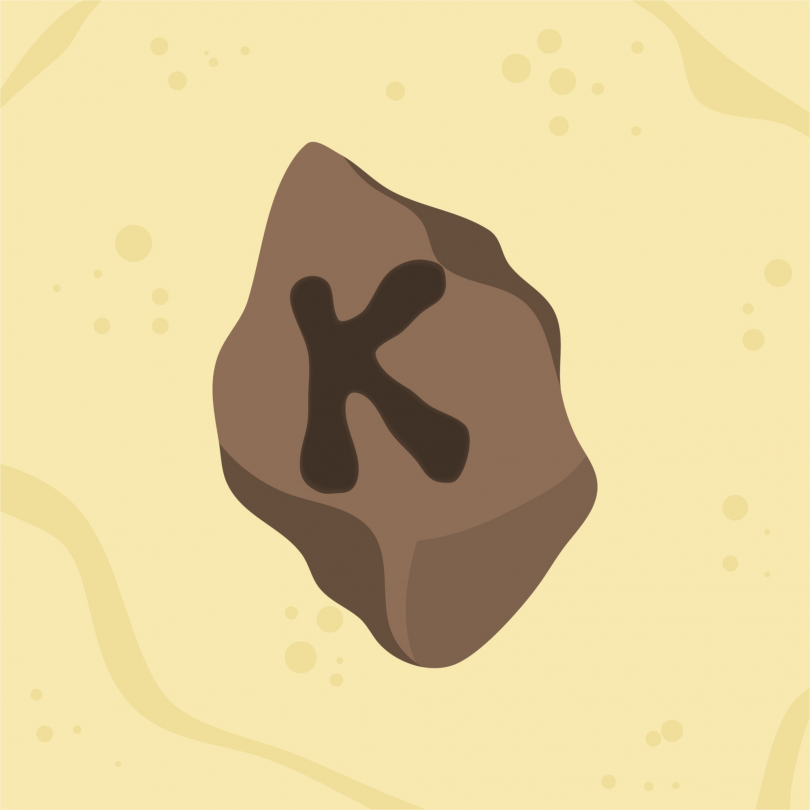Ketamine is the new medical trend, though its been popular on the recreational market since the 80’s, and enjoys use as a legal schedule III anesthetic. For those who use it, the term ‘k-hole’ should be familiar, and for those who want to get into it, it’s a good thing to know about.
Ketamine proposes a great alternative for pain management and the treatment of psychological disorders, but users should be aware of what can happen when too much is taken. A k-hole isn’t life threatening, but can send a user to an out-of-control place. We cover everything important in the emerging industry of psychedelics, which you can read about in The Psychedelics Weekly Newsletter. Keep up with everything going on, and be the first to get access to new deals for psychedelic products as they come in.
What is ketamine?
The drug ketamine is a dissociative anesthetic with this chemical formula: C13H16ClNO. Though it enjoys a large recreational following, the drug was approved in 1970 by the FDA as an anesthetic, having been found for that purpose by Parke-David Pharmaceutical company in 1962. It’s called a ‘dissociative anesthetic’, because that sounded better at the time to researchers than the word ‘psychedelic’, however, it does have the ability to make parts of the brain feel like they are dissociating from each other.
Ketamine was only cleared for use as an anesthetic, even though it was found in original testing that it was a good drug for pain, as well as having the ability to promote beneficial psychological effects. Whether this was purposefully ignored, or just not flushed out fully at the time, is hard to say, but a close relative of ketamine, called esketamine, was approved by the FDA in 2019 for use with depression, and subsequently, suicidal ideation.
While ketamine was not given this approval, there is a loophole that allows easy – and legal – access to the masses, should they have the money to pay for it. As a legal drug, ketamine can be prescribed by any doctor off-label. This FDA-approved process means that even though ketamine is not meant for things like pain management and depression according to the FDA, it can be used for these things if a doctor feels it would benefit a patient.
This has led to a massive gray-market ketamine industry full of clinics where patients can receive both a prescription for use, and the drug treatment itself. This is generally done via IV, though those who opt for the esketamine treatment, will receive it via nasal spray. Esketamine treatment requires the use of a monoamine antidepressant at the same time, making it less desirable for many patients, especially if they’re seeking ketamine treatment to avoid standard antidepressants.

Ketamine used in a recreational way generally comes as a white powder which is snorted. It creates a high that sort of feels like floating, and the dissociation in the brain can be felt, like different sides pulling away from each other. It can distort the senses, cause minor hallucinations, and promote overall feelings of well-being in a user. For me it distorted sound, made things move slower, and made my body feel heavy, but in a good, sort of relaxed way.
What’s a k-hole?
First off, it’s good to remember that ketamine is an anesthetic. When used as an anesthetic, the entire point is to essentially incapacitate a person, meaning its meant to be strong enough to knock a person out, or if not knock them out, get them close to it. A k-hole is like a person accidentally anesthetizing themselves.
When a person gets into a k-hole, they lose control of certain abilities. Think of a person under anesthesia, they’re usually not following a conversation, or walking around, or responding to anything. Such is the same with a k-hole. The body is inundated to the point that functionality is lost. While some local anesthetics do allow a patient to remain awake and alert, (something that’s important for certain procedures), ketamine is a general anesthetic, and when the body has too much of it, it kind of shuts down certain functions.
This can be seen as a form of overdose, but when it’s used as an anesthetic, this is the desired effect. A person will essentially feel so dissociated up top, that they can’t control their body or reactions anymore. This doesn’t mean a loss of bladder control, or for the lungs to stop, but it does serve an important purpose, in keeping a person from taking more. It’s important to understand that unlike overdosing on a drug like heroin, where basic autonomic functions (like breathing and heart rate) can be interrupted to the point of death, ketamine doesn’t do this, though it can certainly cause alterations in heart rate and blood pressure.
When you think about it, its like a pre-overdose. The body shuts down in certain ways, but this acts as a safety mechanism, as a person in this state can’t consume more. In this way, its actually difficult to overdose on ketamine, as the body will enter this phase before the point of overdose, making it difficult for a user to use enough to actually kill them. It’s almost like a built-in safety mechanism to stop real overdosing from happening. When used as an anesthesia, there is always a doctor to monitor levels, so this isn’t a problem. When used for recreational purposes, a k-hole acts as a barrier to further use.
Why does a k-hole happen?
In terms of what causes this response, it’s not well understood, but one study into sheep did shed some light on it. In a 2020 study entitled Characteristic patterns of EEG oscillations in sheep (Ovis aries) induced by ketamine may explain the psychotropic effects seen in humans, the cortical electroencephalography (EEG) response was examined in 12 sheep given ketamine.
It was found that there were immediate and wide-ranging changes in EEG patterns, which affected all parts of the EEG spectrum. As the ketamine wore off, the lower frequencies, which had been more prevalent, led to alternating EEG frequencies going back in forth in short periods from low to high and back again. It’s thought that this oscillation highlights the dissociative aspect of ketamine, as this phase of oscillation is when things like hallucinations occur.
However, when a very high dose was administered of 24 mg/kg, there was a complete stop to activity related to cortical EEG, which lasted for a few minutes before regular function resumed. While it can’t be said for sure, and much more research must be done, this study provides the first indication of what could be causing the k-hole state in both animals and humans at high doses of ketamine. As of yet, this state has not shown to produce damage in the user, but again, much more research needs to be done. Another important question to it all, is what would happen if more ketamine was administered during this extreme phase, and whether at that point, there would be more chance of death.

What does a k-hole feel like?
At one point I did a bit of ketamine with an ex-boyfriend. It wasn’t really my thing in the end, and I never did large amounts. In fact, I was always mindful of this k-hole idea. I remember watching a friend tear through lines, and thinking that I’d for sure get the chance to see a k-hole in action. As it turns out, a lot (and I mean A LOT) of ketamine can be used before this happens, and even my over-the-top friends never fell into a hole, at least not when I was there.
When in a k-hole a person isn’t asleep, and therefore at least somewhat aware. I know from my time on ketamine that awareness is definitely limited, even pre-k-hole, so a person in this state would be somewhat aware, but not completely, and in a state of general and mass confusion. While the person experiencing a k-hole is still technically able to hear, see, and feel things, these inputs are wildly confused by the brain, making an understanding of them difficult, or impossible, for the user. In most cases, things like speaking, or even moving, are out of the question. Depending on how much a person likes to be out-of-control, this can either be a scary feeling, or a relaxing feeling.
For many people its akin to an out-of-body experience, although I found my non-k-hole experience to be like that as well. I imagine it would be a more intense version of this. As ketamine causes confusion and disorientation to begin with, this would be emphasized during a k-hole, when the brain is struggling to make sense of things it can’t put together. For those like me who don’t like being out-of-control, this can create anxiety. Think of being on a rollercoaster, or simply being carried somewhere, and having no ability to stop it.
Now think of being confused as a child in a crowded place. Or looking into a distorted mirror. Or hearing sounds through water. These feelings or sensations could all be part of both a standard ketamine trip, and a k-hole experience. The main difference is that with standard use, a person usually maintains physical functionality, while someone in a k-hole does not.
How long does it last?
One of the positives of ketamine is that its short-acting. Most highs are over in about 30-45 minutes, so if you’re unhappy with your experience, you don’t have to experience it for long. This is beneficial for those who fall into a k-hole, in that it won’t last for a very long time. It can, however, take a few minutes to come on after ingestion, so users should be aware to pace themselves.
While it could seem like it goes on forever for a person in that state, the actual amount of time is relatively short. In contrast, if a person takes too much LSD and ends up in a bad trip, that bad trip might be experienced for many hours. In either case, death is not generally much of a fear, but extreme discomfort and confusion, are.
A k-hole is probably a good indication that a user needs to slow down. If you continuously put yourself in a position where you lose functionality, it might be worth thinking about how use you the substance. On the other hand, for those who like to force such loss in functionality, a k-hole could be seen as a bit of a brain vacation. As with anything that incapacitates a person, its best to know your surroundings and who you are with, as a loss of functionality could pose a threat under many circumstances. Think date rape, robberies, or simply ending up somewhere and having no idea where you are.
Can you die of a k-hole?
Your body will always try to stop you from going too far with something bad for you. When eating too much food, or drinking too much alcohol, for example, the body eventually shuts down, putting you to sleep. When you drink too much alcohol, or take too much of a something your body sees as a bad substance, you might throw up to get it out of your system. These are fail-safes your body uses to maintain control.

While alcohol can make a person tired, and is used by some to bring on sleep, the idea of passing out from drinking is different, and indicates the body needing to shut down to keep the drinker from consuming more. The body, of course, isn’t thinking of it like that, it’s a reactive measure of the way alcohol depresses the central nervous system, but by depressing it enough, it also keeps a person from consuming more, which can override it. Having said all this, passing out can also be an indication of alcohol poisoning itself, and if a person remains unresponsive for too long, they should receive emergency help.
Of course, we already know that a person can still drink themselves to death, eat themselves to death, or take too much of something poisonous. Much like anything else, a large enough dose of ketamine could be fatal, but this is written about so infrequently, that it seems the k-hole generally works at slowing down use. After all, if you can’t move or think right, you also can’t do another line. In fact, I’ve had a difficult time finding general amounts that can cause death, and ketamine deaths are extremely rare.
How much does it take? I did find one study that put it at 11.3 mg/kg via IV, or 678 mg if a person is about 154 pounds (70kg). That would be like doing over half a gram of cocaine at once. I mention cocaine because its more well-known as a recreational drug, and the idea of a line is understood, even if it’s not specifically consistent between people or occurrences. Both are short acting drugs where that amount can certainly be done over a period of time, but very few people will take an entire half gram of cocaine or more in one line, and the same is true of ketamine.
In terms of ketamine deaths in general, here is an indication of why we hear so little about it. One of the only statistics I could find comes from England, and establishes from coroner reports that between the years of 1997-2005 there were less than five deaths where ketamine was implicated. This is as per a National Programme on Substance Abuse Deaths database investigation from January 31st, 2020. It’s kind of hard to so much as call the drug dangerous, when the death statistics are so monumentally low, and only implicate the use of ketamine by the person who died, but not that it was the only substance used.
Conclusion
That ketamine is as safe as it is, might actually have to do with the k-hole effect, though this is just supposition on my part at the moment. A k-hole might be a point of intense confusion for the brain, but the inability to keep going, might also be beneficial. Not every drug affords us this, and with approximately 70,000 dying a year in the US from opioids, it makes the idea of a k-hole seem like a walk in the park.
Thanks for joining us! Welcome to CBDtesters.co, your preeminent internet location for the most important independent coverage of cannabis and psychedelics-related news going on in the world today. Stop by regularly to stay informed on the fast-moving universe of cannabis and psychedelics, and subscribe to The Psychedelics Weekly Newsletter, for your daily dose of industry news.
Disclaimer: Hi, I’m a researcher and writer. I’m not a doctor, lawyer, or businessperson. All information in my articles is sourced and referenced, and all opinions stated are mine. I am not giving anyone advice, and though I am more than happy to discuss topics, should someone have a further question or concern, they should seek guidance from a relevant professional.









